The Bird Watching Answer Book
The CornellLab of Ornithology
of Ornithology
THE Bird Watching ANSWER BOOK

Everything You Need to Know to
Enjoy Birds in Your Backyard and Beyond
LAURA ERICKSON

The mission of Storey Publishing is to serve our customers by
publishing practical information that encourages
personal independence in harmony with the environment.
Edited by Deborah Balmuth and Lisa H. Hiley
Art direction and book design by Mary Winkelman Velgos
Text production by Jennifer Jepson Smith
Illustrations by Pedro Fernandes
Indexed by Nancy D. Wood
2009 by Cornell University
All rights reserved. No part of this book may be reproduced without written permission from the publisher, except by a reviewer who may quote brief passages or reproduce illustrations in a review with appropriate credits; nor may any part of this book be reproduced, stored in a retrieval system, or transmitted in any form or by any means electronic, mechanical, photocopying, recording, or other without written permission from the publisher.
The information in this book is true and complete to the best of our knowledge. All recommendations are made without guarantee on the part of the author or Storey Publishing. The author and publisher disclaim any liability in connection with the use of this information.
Storey books are available for special premium and promotional uses and for customized editions. For further information, please call 1-800-793-9396.
Storey Publishing
210 MASS MoCA Way
North Adams, MA 01247
www.storey.com
Printed in China by Regent Publishing Services
10 9 8 7 6 5 4 3 2 1
LIBRARY OF CONGRESS CATALOGING-IN-PUBLICATION DATA
Erickson, Laura, 1951
The bird watching answer book / Laura Erickson.
p. cm.
Includes index.
ISBN 978-1-60342-452-3 (flexibind with paper spine: alk. paper)
1. Bird watching. I. Title. QL677.5.E75 2009
598.07234dc22
2009023708
For my children, and for people everywhere
whose minds bubble over with questions.

Acknowledgments
This book would not have been possible without the resources and people at the Cornell Lab of Ornithology. Ive been ever amazed at how accessible and willing to answer my questions the scientists here are. Id especially like to thank the many experts who looked over the manuscript and made suggestions; their help improved the book enormously. Any errors that remain are entirely my fault.
Id especially like to acknowledge Miyoko Chu, the director of communications at the Lab. Her eagerness to share the Labs many scientific and educational resources with people everywhere is exceeded only by her commitment to excellence. She has been one of the most inspiring, dedicated, and helpful mentors Ive ever had.
The Cornell Lab of Ornithology is a nonprofit, member-supported organization that solves critical problems facing birds and other wildlife by using the best science and technology and by inspiring people of all ages and backgrounds to care about and protect the planet. For more information, visit www.birds.cornell.edu.
Contents
PART ONE
For the Birds: Feeding, Watching and Protecting Our Feathered Friends
PART TWO
Bird Brains: Avian Behavior and Intelligence
PART THREE
All About Birds, Inside and Out
Introduction
Why is that Blue Jay bald? Why is a woodpecker digging holes in my house? What do I need to do to attract cardinals to my yard? Where did all these geese come from? How could bird feathers convict a murderer?
Ive been writing about birds for the past 30 years and have been speaking about them on the radio for more than 20 years, and from the very beginning, people have been plying me with questions. Birds are beautiful and fascinating, some easily seen in our own backyards, others worth making long trips to exotic places just to steal a glimpse. Based on a U.S. Fish and Wildlife Service survey conducted in 2005, more than 71 million Americans watch wildlife, an 8 percent increase since 2000. During 2005 alone, these wildlife watchers spent more than $45 billion on activities described as closely observing, photographing, and/or feeding wildlife. Millions of people clicked on a single YouTube video showing a Neotropical bird, a Red-capped Manakin, performing its moonwalk courtship display. As the world grows ever more computerized and mechanized, we grow hungrier to experience nature, and perhaps especially hungry to experience birdlife.
Of all wildlife, birds are the animals we notice most in our daily lives. Even if we dont have feeders and dont pay much attention to nature, we cant help but notice a cardinals song ringing through the air on a frosty February morning, ducks floating on the pond in the park, geese blocking passage on the golf course green. Over 700 species of wild birds breed in North America, from hummingbirds to eagles, and prairie-chickens to city pigeons. Each species is unique, and when we meet up with an unfamiliar one, or with a familiar bird doing an unfamiliar behavior, we cant help but wonder.
Some of our encounters with birds are especially magical. Discovering a robin nest on our windowsill. Coming upon a tiny hummingbird doing his courtship flight, making deep swoops and dives, his wings buzzing mightily. Gazing at tens of thousands of cranes descending against a sunset sky to sleep on the Platte River in Nebraska. Watching from a boat as dozens of Atlantic Puffins fly overhead to their nesting sites, each one holding as many as 12 tiny fish lined up in its beak. Cooking breakfast on a picnic table at Yellowstone National Park and having Gray Jays and Stellers Jays alight on the hot stove to share some bacon.
Whether our experiences with birds are homey or exotic, beautiful or bizarre, thrilling or even a bit unpleasant, they fill us with wonder, and with questions. With the help of scientists and resources at the Cornell Lab of Ornithology, I tackle some of these bird questions anew. I hope this book answers most of your questions and inspires you to spend more time experiencing birds in nature, to come up with more questions, and to discover new answers yourself!
LAURA ERICKSON
PART ONE
For the Birds: Feeding, Watching, and Protecting Our Feathered Friends


CHAPTER 1
Guess Whos Coming to Dinner? The Art of Bird Feeding
In 2006, Americans spent about $4 billion on bird seed and other food for wild birds and other animals. To put this in perspective, that same year they spent $7.1 billion on plasma TV sets, $11 billion on bottled water, $13.5 billion on home video and computer games, $24.1 billion on DVD rentals and purchases, and $58.5 billion on weddings. But thats still a lot of bird seed!
Next page


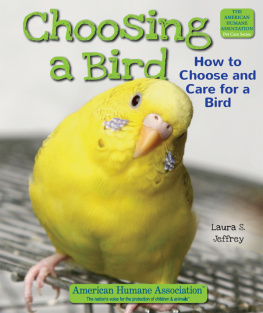
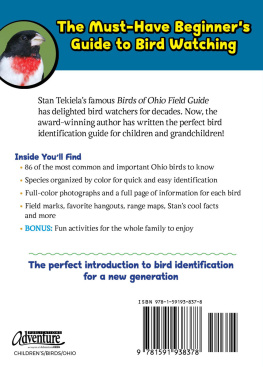
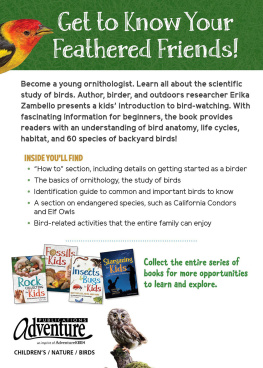
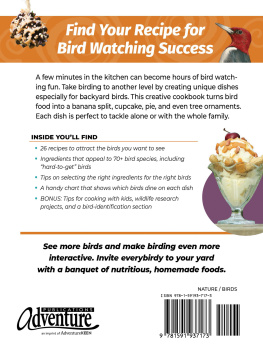
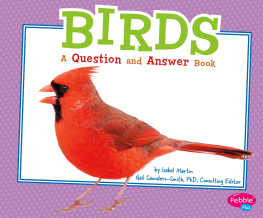
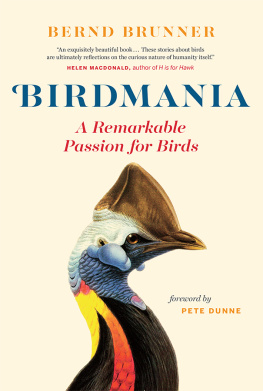
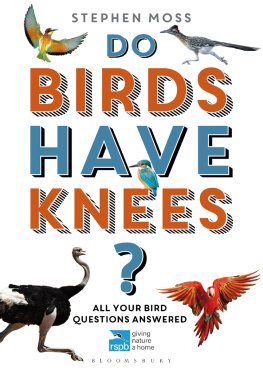
 of Ornithology
of Ornithology



